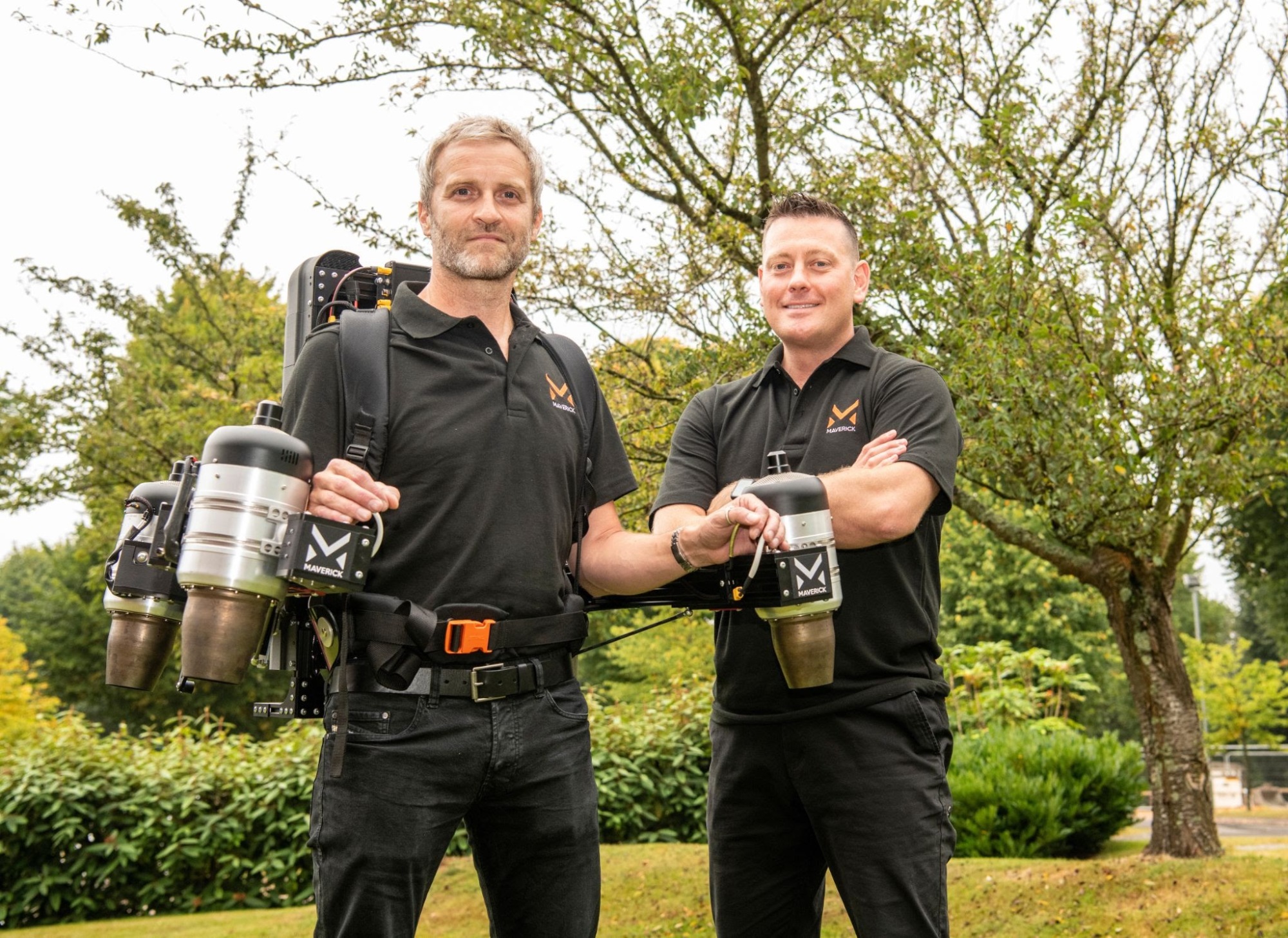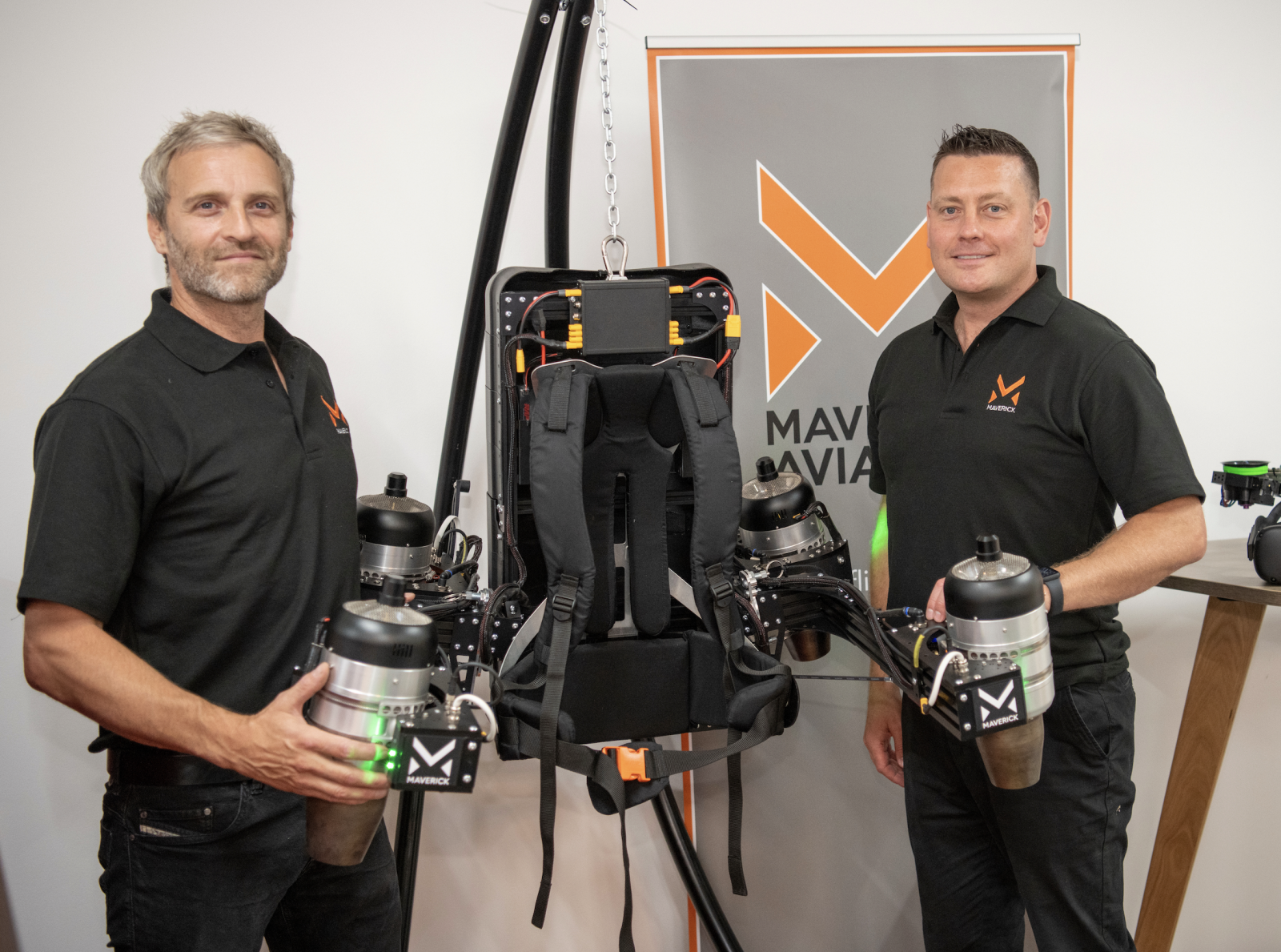Government Proposes ‘Right to Switch Off’
The government is proposing to consult on the “right to switch off” for employees. This would give employees the right to digitally disconnect from...
Read Full Article
The world's first hands-free jetpack could be used to transport engineers to hard-to-reach places on construction sites.
The technology could also transform how challenging maintenance and inspection work is carried out.
The jetpack is the brainchild of Hollywood animatronics expert Matt Denton and Royal Navy Commander Antony Quinn. Matt Denton is well regarded for his work on animatronics and control systems, having worked on numerous Star Wars movies that saw him develop the BB-8 droid from 2015’s Star Wars: The Force Awakens. He also worked on Jurassic World and Harry Potter movies, The Prisoner of Azkaban and The Goblet of Fire.
A unique Vertical Take-off and Landing (VTOL) system is designed to be operated hands-free, allowing people to make safer flights, and precision landings on structures that are difficult to access — from wind turbines to military hardware, buildings and construction projects.
Other use cases include search & rescue, leisure, disaster relief, security and policing.
The first manned test flight is scheduled for next summer and the company is about to start seeking further investment to take the jetpack to market.
“The jetpack uses the same sort of jet engines that you see on a passenger plane, only ours are the size of a rugby ball."
–Antony Quinn
CEO and Co-Founder, Maverick Aviation

Picture: a photograph of Antony and Matt with the jetpack
The jetpack is unusually light because Maverick exploited advanced manufacturing techniques like 3D printing and materials including aluminium, titanium and carbon fibre. It will travel between 10mph and 30mph depending on the task.
The Maverick Jetpack can be reconfigured as a heavy-lift drone capable of being operated remotely and carrying ten times the payload of current similarly sized systems on the market — easily enough to lift a casualty like a stricken climber to safety.
The control system is extremely intuitive and the operator can switch on an in-built autopilot so they can multi-task while in flight if necessary. Early work on the control system software was funded by a £97,000 grant from Innovate UK, secured by Maverick’s grant partner Catax.
This money also helped pay for patent applications and the creation of a concept demonstrator. The team has since received much more funding, including grants and business mentorship from the University of Southampton Science Park.
The company, based at the Fareham Innovation Centre at Solent Airport, near Southampton, estimates the potential market for security, defence and rescue uses alone is worth in excess of £700 million.
Helicopters are currently used to carry out most precision landing work, but Maverick’s Jetpack is far smaller, uses sustainable fuel, and can slash costs.
It also threatens to take market share in the global lift market, which Maverick says is worth approximately £52 billion a year.
Antony Quinn, CEO and Co-Founder of Maverick Aviation, commented:
“The jetpack uses the same sort of jet engines that you see on a passenger plane, only ours are the size of a rugby ball.
“What is unique about what we’re doing is the computer-controlled autopilot system that makes flying effortless and easy to control with precision. That’s how we have changed jetpacks from exciting to useful.
“It’s so intuitive to fly that the cost of training is going to be low, so you’re going to have all sorts of professionals suddenly able to work in the most inaccessible environments safely and quickly.
“I realised that the growing onshore and offshore wind industry really needed a solution like this. Their engineers climb up ladders inside these structures for hours each day and, in an emergency situation, it’s almost impossible to get down quickly. Drones can be useful for inspections, but in many circumstances, you need to get an engineer up there.
“During tours of Afghanistan and Iraq, the number of possible use cases just kept on mounting and I realised how big the opportunity was. The potential is almost endless. Before, people would have used a £30 million helicopter to perform some simple tasks, we can offer a more tailored solution at a fraction of the cost.”
Picture: elevator buttons.
Picture: a photograph of Matt and Antony. Image Credit: University of Southampton Science Park
Article written by Ella Tansley | Published 29 September 2021
The government is proposing to consult on the “right to switch off” for employees. This would give employees the right to digitally disconnect from...
Read Full ArticleAn independent study of over a thousand workers shows that the rate of chronic sufferers of back pain is highest among those working from home full-time. Conducted by...
Read Full ArticleEmployees in England are no longer being asked to work from home, as the government removes Plan B rules. But is this change as simple as encouraging a mass return to the...
Read Full ArticleIn an industry first, floating scaffolding has been used to complete a specialist contract lift on the River Severn. The job further expands the capabilities of the...
Read Full ArticleMost tend to think of facilities management as a job sector based in hospitals, large office buildings or universities – but some FMs work in the coldest and most...
Read Full ArticleMost of us have probably been guilty of working in unusual places over the last eighteen months, but is your sofa desk contributing to your back pain? In 2019-20...
Read Full Article20 per cent of UK office workers feel their work is at risk of going unnoticed because of working from home. Working remotely has increased productivity and the number...
Read Full ArticleA new study from tado° has found that UK homes had their daytime heating on 14 per cent more this winter in comparison to the previous winter. Despite financial...
Read Full ArticleMobile workforce management company BigChange has raised £75 million of investment from Great Hill Partners. The software-as-a-service company, founded in 2013,...
Read Full ArticleWorking from beds and dining tables is contributing to a rise in work-related musculoskeletal cases. In 2020, there were 37.7 per cent work-related musculoskeletal...
Read Full Article